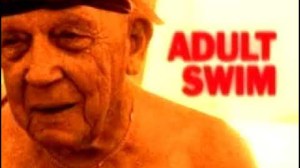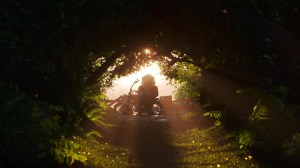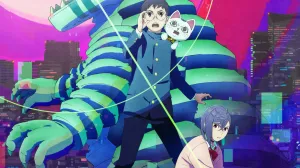
Greg Pak, the best-selling comics writer behind Totally Awesome Hulk and the a just-concluded run on Action Comics, is no stranger to Kickstarter, the popular crowdfunding campaign.
Videos by ComicBook.com
He, along with musician Jonathan Coulton and collaborators Tak Miyazawa, Jessica Kholinne, and Simon Bowland, successfully funded the wildly popular Code Monkey Save World and its follow-up The Princess Who Saved Herself, both based on music by Coulton. Then, Pak went solo with Miyazawa for ABC Disgusting, a children’s alphabet book.
Pak recently launched a new crowdfunding campaign at kickstarter-secrets.com — this time not for a fiction book but for a nonfiction work giving people helpful hints on how to launch a successful crowdfunding campaign.
As proof of concept, the campaign is a week old and is already 277% funded.
Pak joined ComicBook.com to talk about the project, which you can check out on Kickstarter now.
You are doing the fourth Kickstarter — why was now the time for Kickstarter Secrets?
Well, even back when we were doing Code Monkey Save World, I remember thinking, “man, we could write a book!” And we had too much to do, so we did not. [Laughs]
Over the years I’ve done a few similar kinds of things. Back when I was coming up through independent film, I ran a site called Film Help, which was full of tips for no-budget filmmakers. Then years later, Fred Van Lente and I co-wrote Make Comics Like the Pros, which is full of tips for making comics.
I’ve always been a huge advocate of artists sharing information. That’s the only way I was ever able to make any headway, is there were just so many filmmakers and comics people and creative folks over the years who took time to answer all my dumb questions and share really specific information and help me make my way through these different endeavors. So it’s in my bones in some ways.
Then a while back, I was doing some Kickstarter tips online, just on Twitter, and a Twitter friend, @MizCaramelVixen on Twitter, said “Hey, man, you should do a digital book.” And I’d thought of doing a book, but when she said “digital book,” that rang a bell, because that made it feel very doable. So this particular Kickstarter, I’m not planning to print them. I’m planning to do them as a digital release because that feels like the most practical and quickest way to get it out to folks and it removes some of the overhead for me in terms of running the Kickstarter.
I have a very modest goal for the Kickstarter, just to cover the costs of getting it done and to pay for some time, basically, but if I were going to print the stuff, I’d have to ask for considerably more.
I think my other big reason for doing it is, whenever I make a mistake, I feel like one of the ways I redeem myself is by telling people about it so they can avoid making the same mistakes. It’s satisfying for me to turn my mistakes into something positive.
Years ago, I used to do comedy and when I was doing stand-up, I remember thinking that anything bad that happens to me is kind of awesome because then I can turn it into a stand-up routine. So this sort of that same feeling. It really boils down to this notion that making art is not a zero-sum game. I think of it as a thing that we’re all doing together and when folks share information, everybody benefits.
I’ve seen so many great projects that failed to get funded, and I think becuase there’s a failure to understand how Kickstarter works…
Right. I’ve also seen some really amazing people put up Kickstarter and either not have success or not have the kind of success you might expect them to have. Sometimes there’s some basic things you can tweak in doing all that better. We’re definitely going to address those kinds of things in this book and hopefully it will help people’s projects achieve their potential.
Another thing is too I think a big thing is scaling your project in a reasonable way given where you are in your career. Even now with this book, I honestly have no idea what the demand will be. I know there are a lot of people who want to do Kickstarters but I have no idea how many people want this kind of book so I’m purposely keeping the ask low. I’m not banking on getting a thousand backers — that would be fantastic, it might happen — but every time I do it, I try to build a project that lets me do what I want to do but that we try to make it realistic given our best understanding of who we can reach and what kind of market there is out there. So the book will go through that process and talk about how you make those kinds of decisions.
What are the big mistakes you see people make?
First off is just scale: as I was talking before, picking a project that’s realistic. Anything is possible but we have to think about what’s probable as well.
Comics may be one of the cheapest of art forms to produce but it’s still expensive to make a full-length comic and particularly a graphic novel when you pay people what they deserve to be paid to set time aside to do it. So I think particularly in publishing and comics projects specifically, probably scale. Having a goal that’s too high given your existing network and the nature of the project you’re pitching.
I think it’s smart to make a project as small as you can and still be an awesome project that you care about deeply. But make it small and make it doable and then if you go way over, you can expand it. That’s what we did with the Code Monkey project. Our initial ask was a lot, but given my partner Jonathan Coulton’s fan base and my own notoriety at the time, we figured we would have a good shot at it. We only expanded the size of the book as we hit our stretch goals and went past our initial ask.
I kind of went through this project even when I was going through this latest one: it’s the smallest Kickstarter I’ve ever done, but it’s realistic. If it gets bigger I can expand some things and I have some super-exciting stretch goals in mind, but I’m starting something that feels achievable.
Another is picking rewards that make sense. Sometimes folks price their base reward too high or too low and pricing that base reward so that people can get the thing you’re making at a reasonable price is important.
Another huge thing is proper budgeting, and I’m also talking about budgeting time. Sometimes it’s easier to budget your dollar amounts than it is to budget your time amounts. Budgeting time can become very important, particularly when you get into the excitement of stretch goals and special rewards.
If you have stretch goals that involve visiting places in person or making one-of-a-kind objects, and a lot of people sign up for those rewards, you have a lot of time on your hands. Those things on paper may look cheap becuase you’re making them yourself, but when you add up the time you put into it, it can take you months to deliver, depending on what you’ve committed to.
Postage is always key. The book will be crammed full of helpful tips, including that postage rates tend to go up in January. Just recently the base rate for shipping a USPS Priority Mail envelope went from five dollars and something cents to six dollars and something cents because they eliminated the discount you used to get from doing it online. Being aware of that, knowing that something like that may be coming ahead of time are all important.
Obviously, when you do your comics, you have a built-in audience who know you and what you’re capable of. This is a more general project…do you think your specific audience is more likely than anybody else to want it?
A little. I think the folks who follow me on Twitter, a cross section of them anyway, would be more likely to be inclined to run a publishing Kickstarter than the average person who is on Twitter. Folks who like comics, a pretty high percentage of them, would also like to make comics some day. And a pretty high percentage of people who would like to make comics someday have thought about crowdfunding it on Kickstarter.
My hope is that there’s enough folks to put it over the top. And one of the beautiful things about Kickstarter, it’s not about just selling that one book. The campaign creates a community of people who have bought in and who follow the updates and frankly are rooting for you. You end up with a mailing list; you can reach out again through Kickstarter and these are folks who are interested in what you’re doing, and I would imagine a pretty high percentage of folks who back projects on Kickstarter have an idea in the back of their head that eventually they might want to do one themselves.








